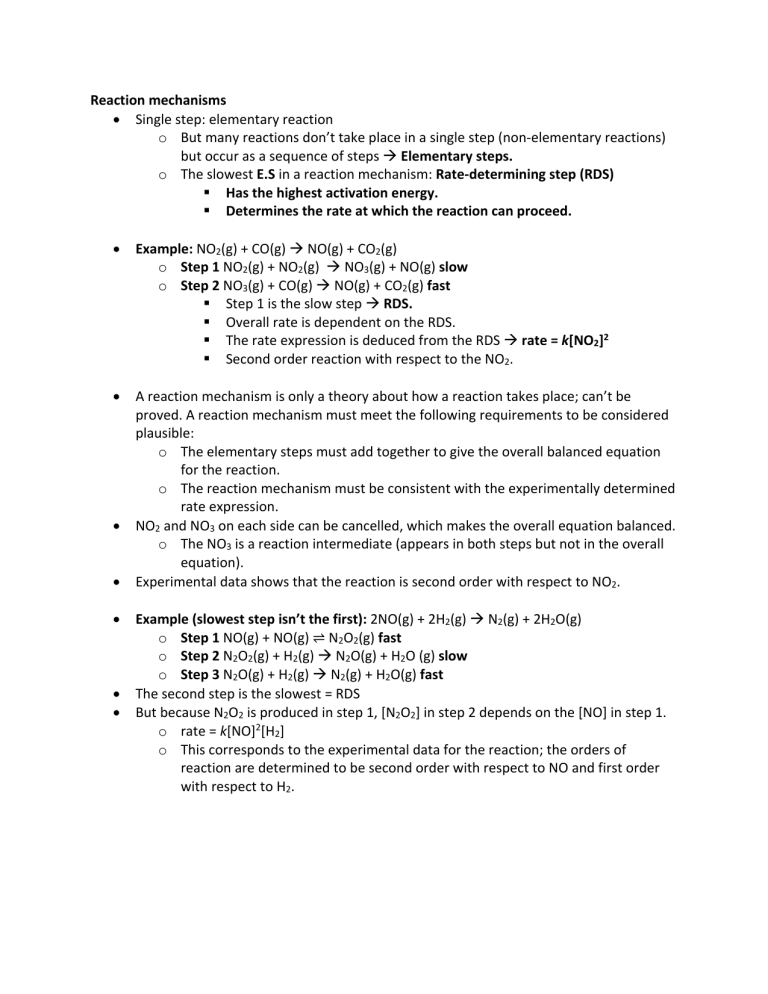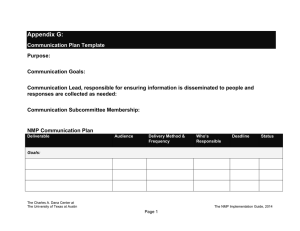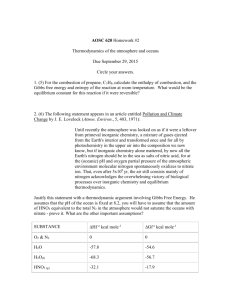
Reaction mechanisms • Single step: elementary reaction o But many reactions don’t take place in a single step (non-elementary reactions) but occur as a sequence of steps à Elementary steps. o The slowest E.S in a reaction mechanism: Rate-determining step (RDS) § Has the highest activation energy. § Determines the rate at which the reaction can proceed. • Example: NO2(g) + CO(g) à NO(g) + CO2(g) o Step 1 NO2(g) + NO2(g) à NO3(g) + NO(g) slow o Step 2 NO3(g) + CO(g) à NO(g) + CO2(g) fast § Step 1 is the slow step à RDS. § Overall rate is dependent on the RDS. § The rate expression is deduced from the RDS à rate = k[NO2]2 § Second order reaction with respect to the NO2. • A reaction mechanism is only a theory about how a reaction takes place; can’t be proved. A reaction mechanism must meet the following requirements to be considered plausible: o The elementary steps must add together to give the overall balanced equation for the reaction. o The reaction mechanism must be consistent with the experimentally determined rate expression. NO2 and NO3 on each side can be cancelled, which makes the overall equation balanced. o The NO3 is a reaction intermediate (appears in both steps but not in the overall equation). Experimental data shows that the reaction is second order with respect to NO2. • • • • • Example (slowest step isn’t the first): 2NO(g) + 2H2(g) à N2(g) + 2H2O(g) o Step 1 NO(g) + NO(g) ⇌ N2O2(g) fast o Step 2 N2O2(g) + H2(g) à N2O(g) + H2O (g) slow o Step 3 N2O(g) + H2(g) à N2(g) + H2O(g) fast The second step is the slowest = RDS But because N2O2 is produced in step 1, [N2O2] in step 2 depends on the [NO] in step 1. o rate = k[NO]2[H2] o This corresponds to the experimental data for the reaction; the orders of reaction are determined to be second order with respect to NO and first order with respect to H2.



